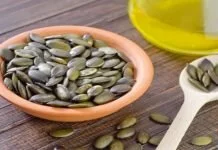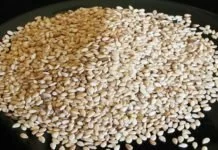Instant noodles are the most affordable meal for folks who do not have much money or time, college students who live far from their homes especially. If you assume that instant noodles aren’t as bad as other varieties of junk food, such as burgers, fries, and burritos, be sure you read this article, and you’ll see things from some other viewpoint sure.
Dr Braden Kuo from the Massachusetts Basic Hospital have an test that was initially in its kind to find what actually happens in your digestive system after you take in instant noodles, or ramen noodles, if you like it better. He used a pill-sized camera to perform his experiment, and the results of his action surprised the global world.
Ramen noodles do not breakdown time once they are used even
In the video tutorial above you can view how ramen noodles look in the stomach two time once they are consumed. At that stage noodles continue to be full even, which is false of homemade ramen noodles. That is horrifying in so many aspects.
One of these is the actual fact that provides additional pressure to the digestive system, since it is compelled to work with long hours to be able to breakdown processed food items, which is rather ironic because processed food items do not contain much fibers and get divided more quite fast.
In conditions when food remains for too much time in the tummy, it has an enormous have an impact on on the absorption of nutrition. Speaking of prepared ramen noodles, they may have almost no nutrition that needs to be absorbed, contain lots of additives, like the preservative tertiary-butyl hydroquinone (TBHQ), better known as a toxin.
When TBHQ remains in the digestive tract for too much time, along with hard-to-dissolve noodles, you can only just guess which will be the potential problems you face.
Five grams of TBHQ bring danger
TBHQ is a byproduct of petroleum, which is known as an “antioxidant often, ” which is quite incorrect since it is a artificial chemical substance that has antioxidant properties actually, and not an all natural antioxidant.
This toxic chemical substance is put into a wide array of foods, including crackers, crisps and junk food, in order to avoid oxidation of extra fat and natural oils, and therefore prolong shelf life.
TBHQ is within McDonald’s chicken breast nuggets, Kellogg’s CHEEZ-IT crackers, Reese’s peanut butter mugs, Whole wheat Thins crackers, Teddy Grahams, Red Baron frozen pizza, Taco Bell beans, and a great many other popular food selections.
This substance is situated in varnishes, lacquers, pesticide products, beauty products, and perfumes to be able to increase their steadiness and lower evaporation.
Through the 19th and 21st conferences, the Joint FAO/WHO Expert Committee on Food Chemicals brought a conclusion according to which TBHQ is safe for use at a rate of 0-0.5mg/kg of bodyweight. (1)
However, the Codex payment estimated the utmost appropriate limit to be between 100 and 400 mg/kg, of course, with regards to the food it is situated in. (2)
According to the, nibbling gums are permitted to contain greatest levels of TBHQ.In america TBHQ should never go over 0.02 percent of its engine oil and excessive fat content. ( 3 )The contact with five grams of TBHQ can be lethal, as discussed in the Consumer’s Dictionary of Food Chemicals, and an individual gram of the substance could cause: (4)
Delirium
Sense of suffocation
Nausea and vomiting
Tinnitus (tinnitus)
Collapse
Though TBHQ is not regarded as a persistent toxicant even, meaning it generally does not bioaccumulate and your body will probably avoid it, when used through instant ramen noodles, body receives prolonged subjection. As environmentally friendly Working Group (EWG) talks about, TBHQ brings serious health threats, which was within canine studies. These dangers require: (5)
Liver impact at low doses
Mutation of mammalian skin cells, found through in vitro tests
Biochemical changes at low doses
Reproductive result at high doses
Instant noodles and metabolic syndrome
The Journal of Diet published a report relating to which women who eat noodles have a dangerously risky of metabolic symptoms, which is false of women who do not eat very much noodles, no matter their eating patterns or physical exercise. (6)
About 68% of women who favor eating instant noodles more than 2 times weekly were at an increased risk of producing metabolic syndrome, with a large number of symptoms, such as central over weight, hypertension, high blood glucose, enhanced triglycerides, and low HDL cholesterol levels.
What is worse even, if you have three or even more of these symptoms, you stand at a larger chance of producing diabetes and coronary disease.
A youthful research predicated on the nutrient consumption between people who eat instant noodles and folks who do not eat these noodles turned out that instant noodles have minimal contribution to nutritious diet.
Noodle buffs have an unhealthy intake of proteins, calcium, phosphorus, flat iron, potassium, supplement A, niacin, and vitamin supplements C, in comparison with people who do not eat these noodles. (7) But, they have got a big consumption of energy, unhealthy sodium and fats. A package of instant noodles contains up to 2,700 milligrams of sodium. (8)
“Goods” within instant noodles
From the huge amounts of sodium and TBHQ aside, a classical offering of instant noodles is made up of a great many other health-threatening chemicals. Prevent Disease reviews: (9)
“The dried out noodle stop was at first created by display frying grilled noodles, and this is still the key method used in Asian countries, though air-dried noodle blocks are preferred in European countries. The primary substances of the dried out noodle are wheat flour, hand oil, and sodium. Common elements of the flavoring natural powder are sodium, monosodium glutamate, seasoning, and glucose.
…In 2012 June, the Korea Food and Medicine Supervision (KFDA) found Benzopyrene (a cancer-causing product) in six brands of noodles created by Nong Shim Company Ltd. However the sums were said by the KFDA were minuscule rather than unsafe, Nong Shim have identify particular batches of noodles with a nagging problem, by Oct 2012 prompting a recall.”
If you’re buying a particular reason to avoid instant noodles, this will become more than enough for you.
Instant noodles contain monosodium glutamate (MSG), an excitotoxin that has which can overexcite nerve skin cells to the level of problems and loss of life, which in turn causes brain dysfunction and destruction, worsening or prompting learning disabilities, Alzheimer’s, Parkinson’s, Lou Gehrig’s, and so many more.
Monosodium glutamate is approximately 78% free glutamic acid solution, which is actually the very same neurotransmitter employed by human brain, nervous system, eye, pancreas and other essential organs in the physical body that initiate important processes.
MSG is thought to be the ideal overweight drug, since it can be used to fatten lab mice for the purpose of a particular research. So, if you are wanting to sustain your normal bodyweight, avoid consuming no matter what MSG.
Eat total, living foods to keep up optimal health
Eating instant noodles occasionally shall sure not destroy you, and the true problem is based on the ever more popular habit of changing real food with instant noodles and other ready-made foods. That is a perfect exemplory case of what this alternative can do to your system, because eating processed foods like instant noodles a week or more influences both health and weight twice.
Unnecessary intake of processed food items triggers putting on weight and persistent disease, because such products are saturated in sugar, fructose, processed carbs, and unnatural ingredients, and lower in nutrients in fibers. Processed food items were created and addictive to make people want more.
They stimulate desires, and cause putting on weight. In addition they lead to growing insulin amount of resistance and chronic swelling, and these both are an indicator of any serious disease. This will not delight you, because folks have resided great on vegetables, meats, eggs, fruits, and entire foods for years and years, and processed food items are today’s invention.
Remove processed food items from your daily diet, and that will require an move forward planning of meals. But, when done step-by-step, this isn’t that organic. First, visit your neighborhood markets to check out in-season foods that are listed to market. Then, plan meals.
The same pertains to supermarket sales. Your very best option is to plan a complete week of meals, and ensure you have all the substances you need readily available. You can certainly do your prep work, which would make things a total great deal easier, especially if there is no need much leisure time.



